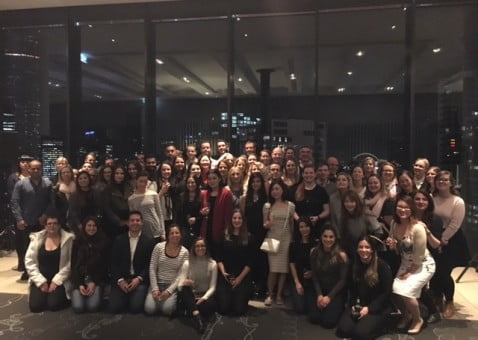With the success of a business or organisation very much reliant on its culture, the right people need to be recruited and those people need to be managed effectively.
This highlights the importance and critical nature of Human Resources (HR) within the organisation.
However, the biggest challenge in achieving this is getting HR to think and operate more strategically on the future direction of the company.
HR executives typically see themselves as order takers. They can be so consumed in operational tasks, there is minimal time and focus to think strategically and be influential amongst the C-suite.
Recently I attended and presented at the National HR Summit in Sydney so had the opportunity to speak to hundreds of HR professionals in a few days.
There was much conversation about corporate training, team building, staff conferences and team events, however a common topic became this very challenge – getting a position in the C-suite or being able to influence the C-suite.
Most HRs who I spoke to find it hard to convince the C-suite to commit significant, and in some cases, any investment for building a healthy and values-led culture.
The C-suite often sees culture as less tangible than creating a new product line or making a major capital investment, and more difficult to forecast and measure potential risks and returns arising from a company’s culture.
HR needs to become less focused on following orders and procedures, and start becoming drivers of change, providing educated and strategic input into the future direction of the company.
Following the National HR Summit, I conducted a series of interviews with a variety of industry professionals to gain some further insights on how HR can join or at the very least influence their C-suite.
Director of Motivation Matters, Anneli Blundell is a management consultant who helps senior business leaders increase their influence, engagement and professional visibility.
Anneli believes HR is not considered part of the C-suite at the moment because they have historically positioned and see themselves as order takers.
“HR is not positioning itself as a strategic business partner that adds value to the business’ future capital needs,” Anneli said.
“HR needs to start pushing back on the operational stuff so they have the time to think strategically,” she said.
“This may mean pushing back on the ownership of coaching and developing people to the leaders so they can spend more time operating on the strategic focus of the business.”
“It is important HR is among the C-suite particularly so all leaders understand the culture and the different needs of people, departments and offices within the company,” Susan said.
To influence the C-suite to invest in culture, Susan outlined that their own meetings with the heads of each state, regular surveys and gap analysis has helped them see the importance of culture.
Susan’s team recently gained a score of 100% on their in-house engagement survey and their team has gained business results over the past year that has put a global spotlight on them.
For a different perspective, a Chief Operating Officer (COO) for a large insurance company who chose to remain anonymous, highlighted that anecdotal evidence can be powerful in influencing decision makers to invest in culture.
“The C-suite would benefit from seeing the impact that attrition has had on the organisation,” said the COO.
She said examples of success stories of people who have progressed in their career can help others visualise a clear pathway and a reason to invest time and energy into culture as well.
Anneli said it’s important to speak the language of the business.
“Show them you understand what they care about – link a focus on culture to their current business agenda not just the HR agenda.”
So, it’s time that HR took a seat at the C-suite table and becomes an important voice in cultural decision making.
Anita Kropacsy, Corporate Training Manager, Corporate Challenge Events




Recent Comments